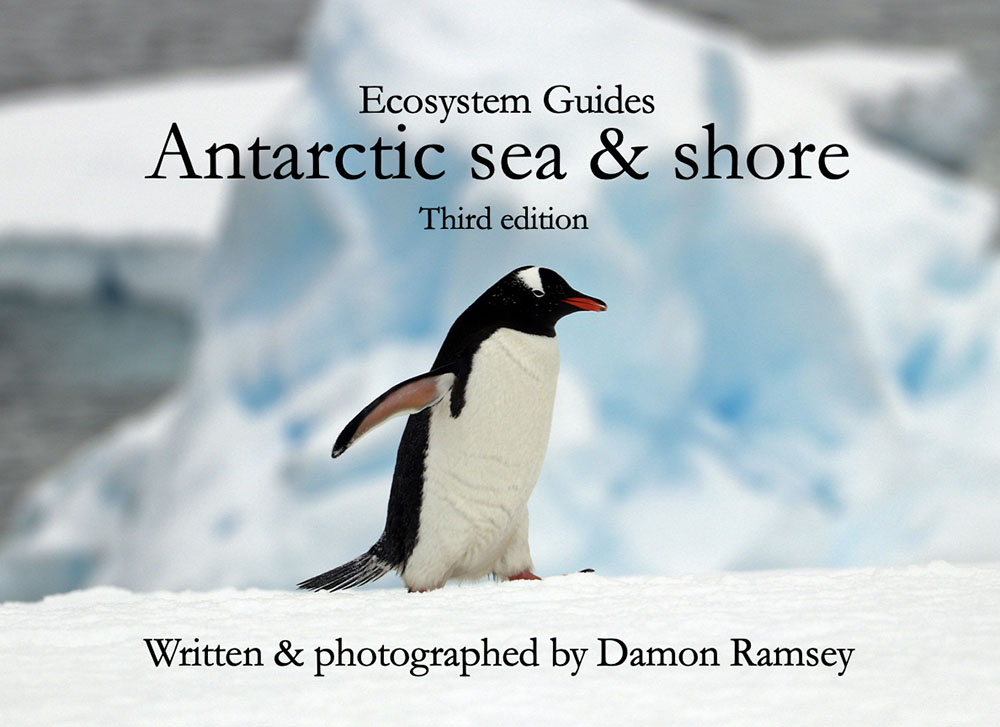ecosystem-guides.com
....exploring the planet's ecosystems
AUSTRALASIAN
Temperate Seashore
The seashores of the temperate parts of southern Australia and New Zealand...
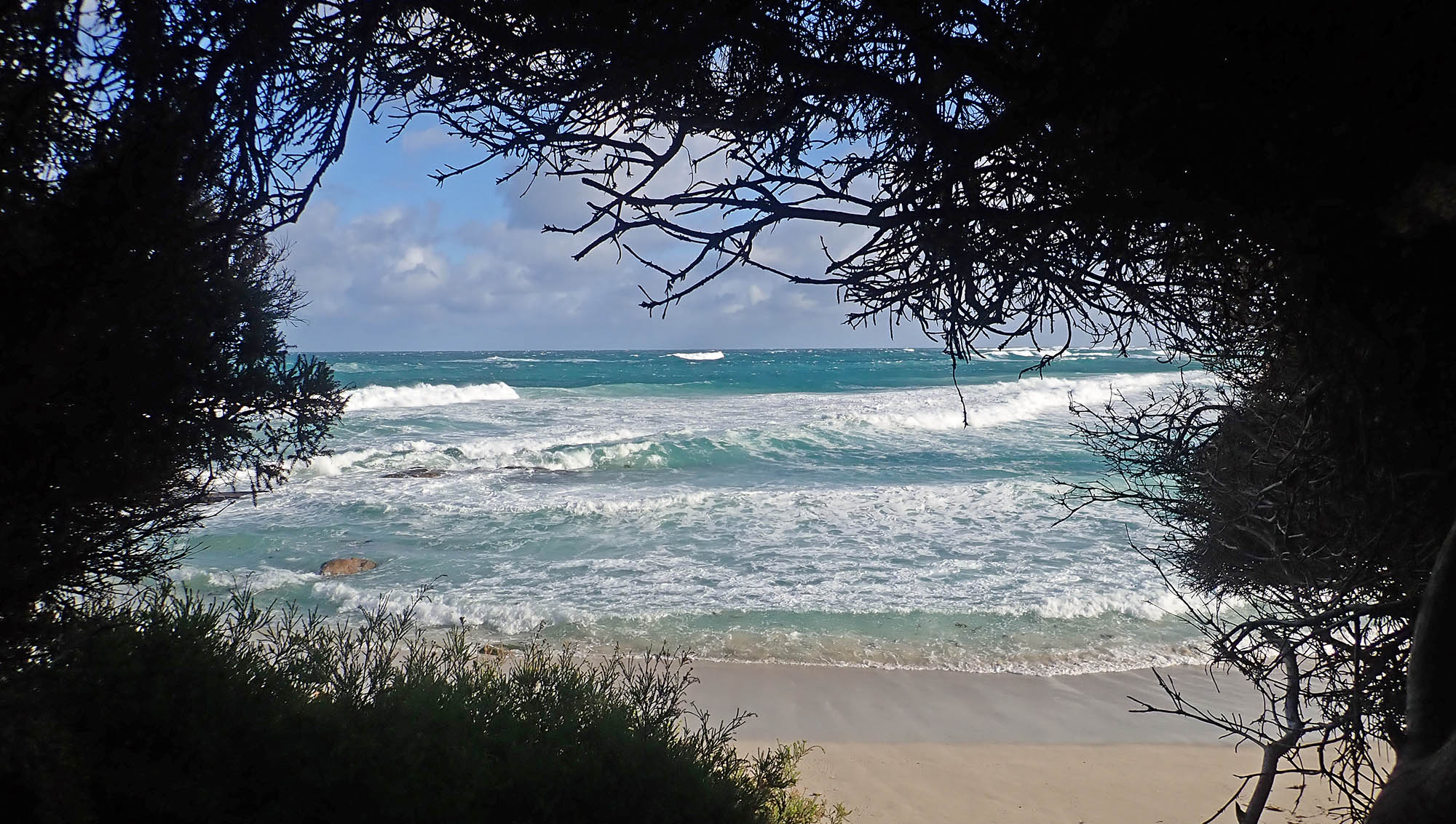 (Leeuwin coast, south-west W.A)
(Leeuwin coast, south-west W.A)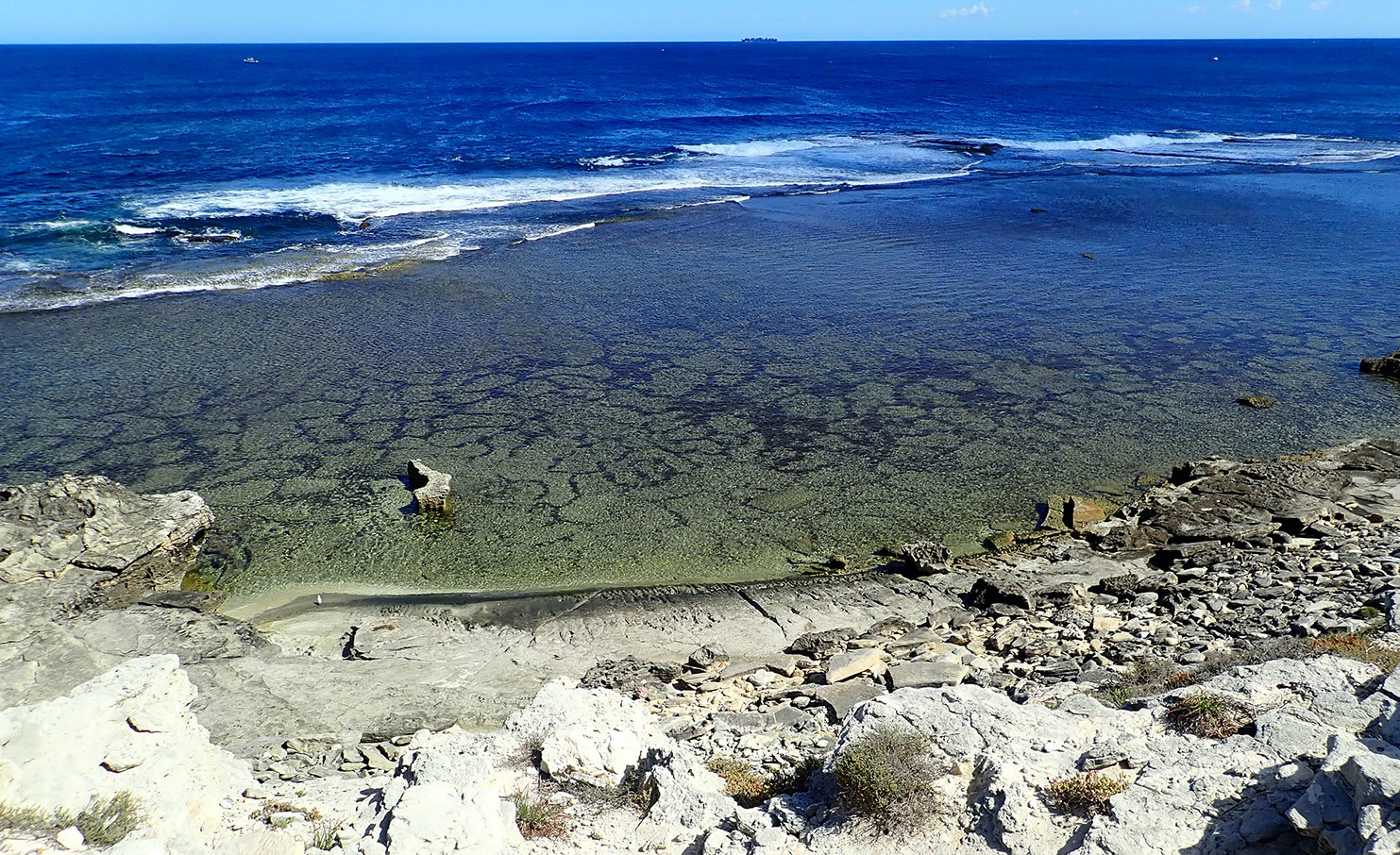 rock platform, Rottnest Island, Australia
rock platform, Rottnest Island, AustraliaFrom the peaceful (above), to the violent (below)....
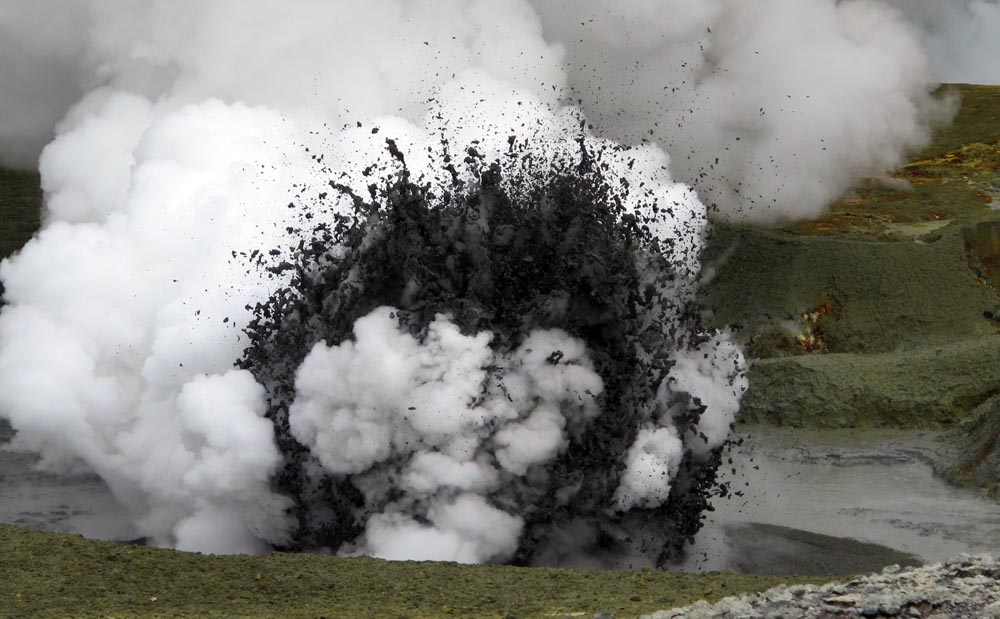 White Island, New Zealand
White Island, New ZealandOne of the most famous of all cyanobacteria, are the ‘stromatolites’. They are the result of colonies of cyanobacteria slowly binding calcium carbonate into short fat dome-like structures over millions of years. Even though they common in the fossil record, there are few places in the world where it is happening today; one such famous example is in Shark Bay Western Australia.
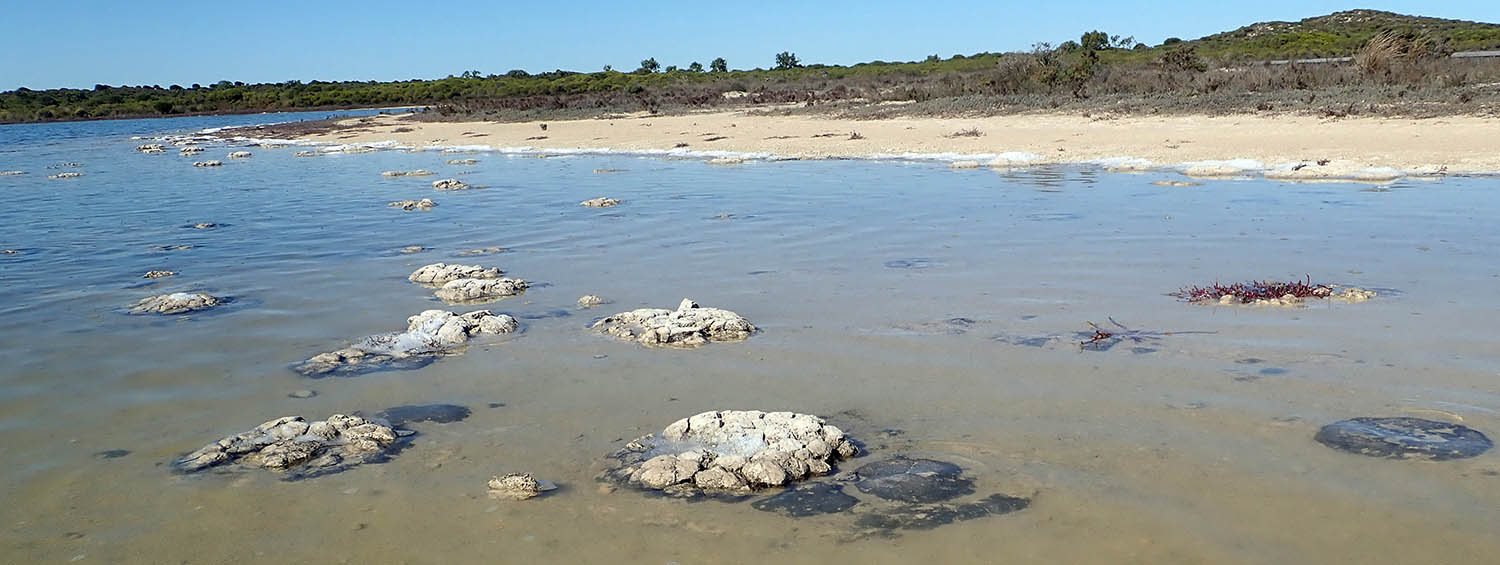
Various lichens are common on the exposed rocks along the seashore above the high tide mark, the most noticeable being the 'Sunburst Lichen' of the widespread genus Xanthoria.
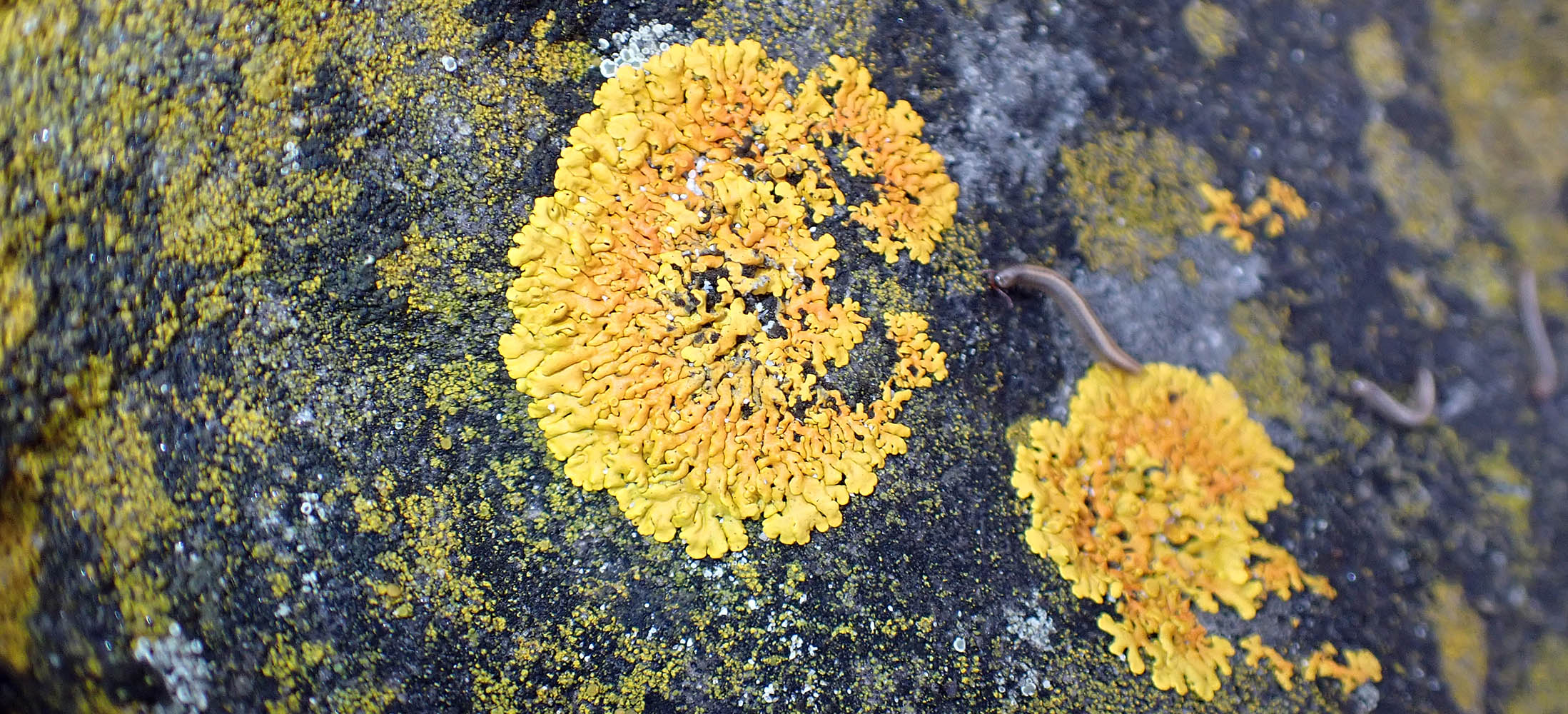 (Kangaroo Island)
(Kangaroo Island)The class Phaeophyceae includes all the 'Brown Algae'. The often seen Ecklonia radiatia, 'Spiny Kelp' grows across the temperate shores across the southern hemisphere, including southern Australia, New Zealand, Madagascar, but is also recorded up into Cape Verde Islands. It is rarely very long, less than a metre in length. The blades have a distinct pattern of ridges, and the edges have regular spines. They normally inhabit the lower inter-tidal zone to about 25 metres depth, but are often found washed along temperate shores.
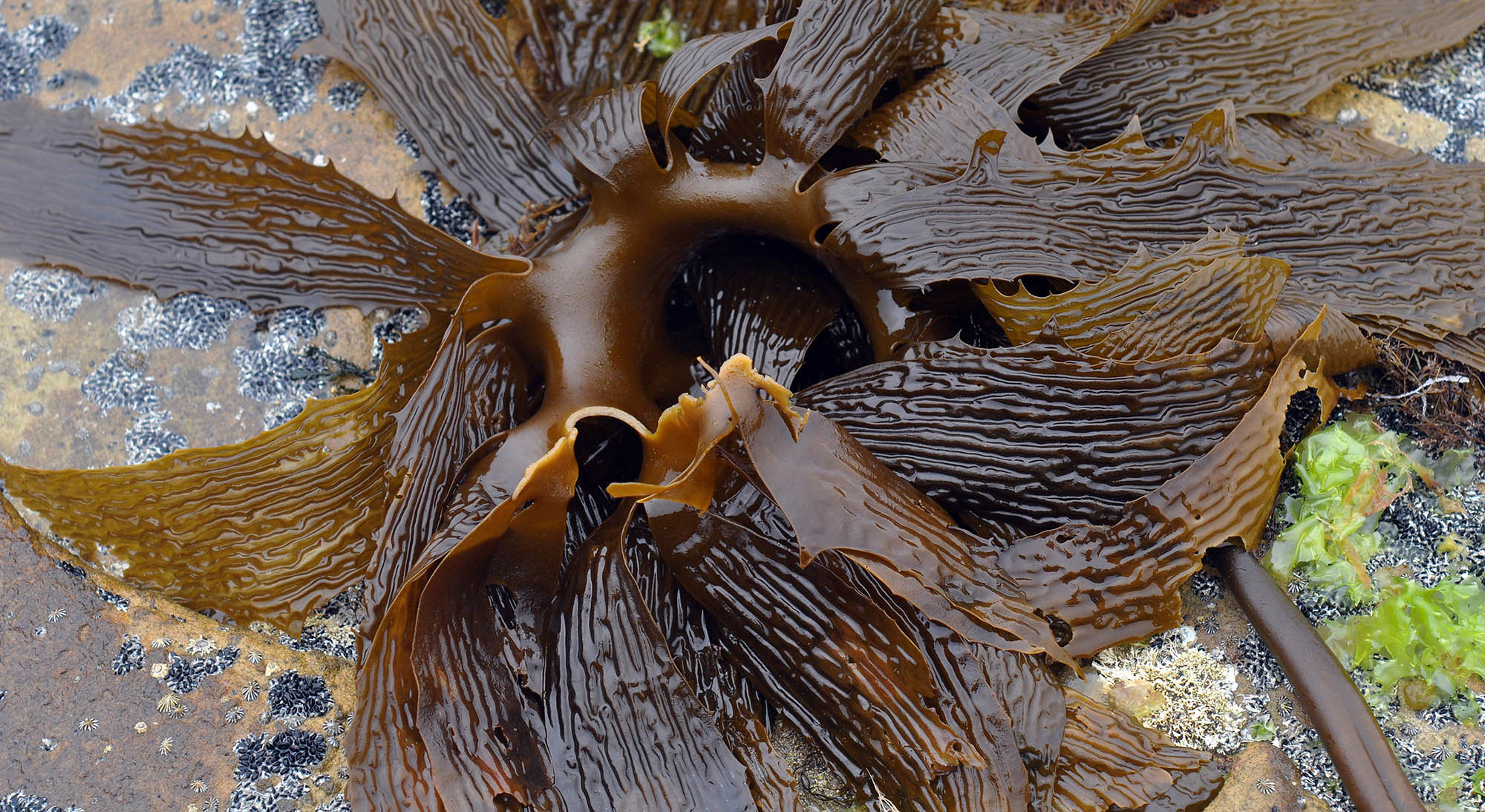 (Maria Island, Tasmania)
(Maria Island, Tasmania)The family Hormosiraceae contains the unusual and distinctive Hormosira banksii 'Neptunes Necklace'. which is endemic to the intertidal zones of temperate seashores of south-east Australia, New Zealand, Lord Howe and Norfolk Islands. It outcompetes other algae due to being able to avoid desiccation.
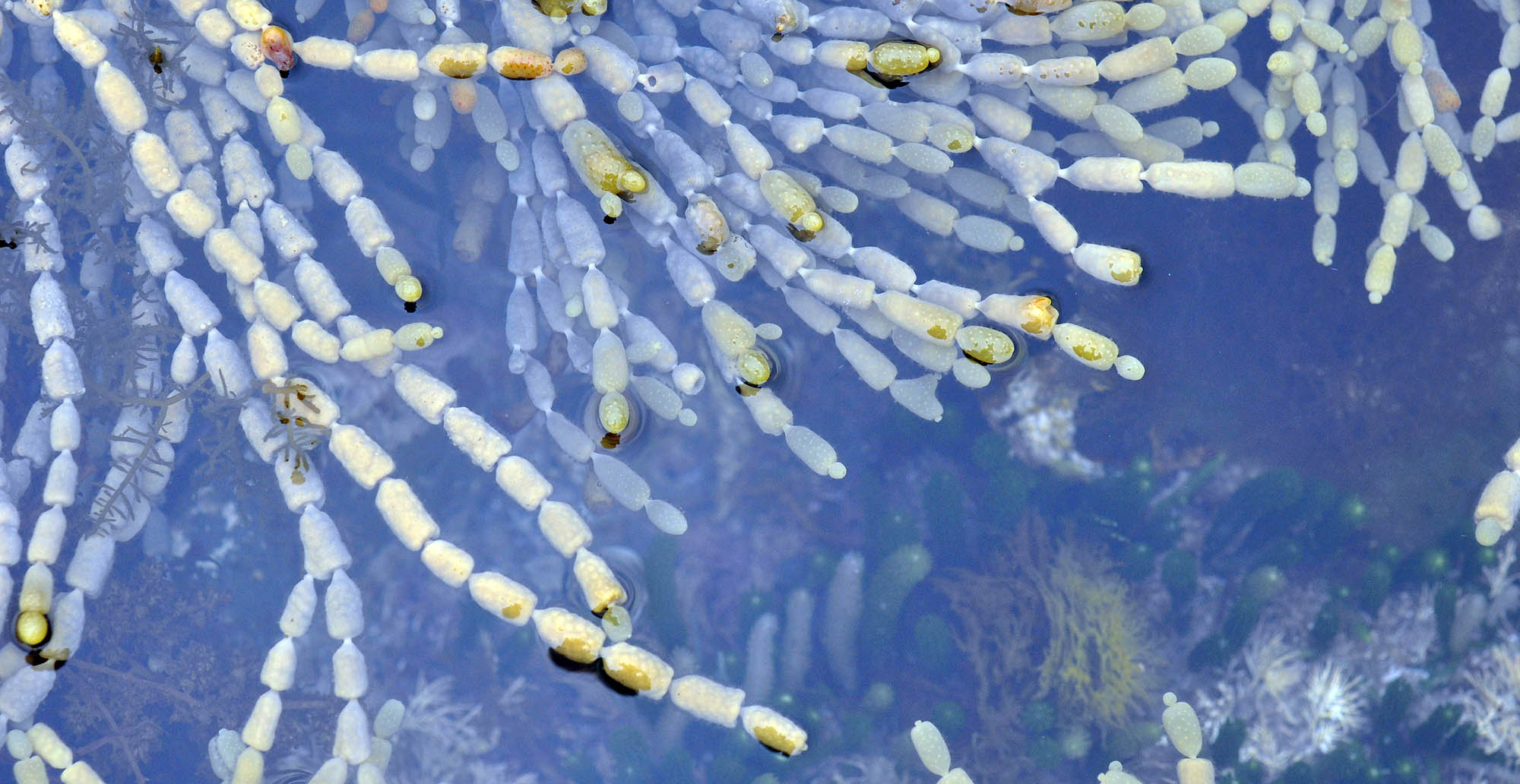 (Maria Island, Tasmania)
(Maria Island, Tasmania)The large Division Chlorophyta contains all the land vascular plants, but also the 'green algae' or classic green seaweeds (to reflect their relationship, in contrast to the distantly related brown and red algae). The family Ulvaceae contains the well known and widespread Sea Lettuce, including the specoes Ulva lactuca. As suggested by the common name, looks like lettuce, or torn green paper. It is very thin, being only two cells thick. It grows in shallow waters near the shore, including lower intertidal areas. Found worldwide, especially common on temperate seashores with abundant nutrients. This seaweed is edible. However, when large amounts wash up on shore, the rotting thalli (leaves) produce hydrogen sulphide, and this has been implicated in poisoning people.
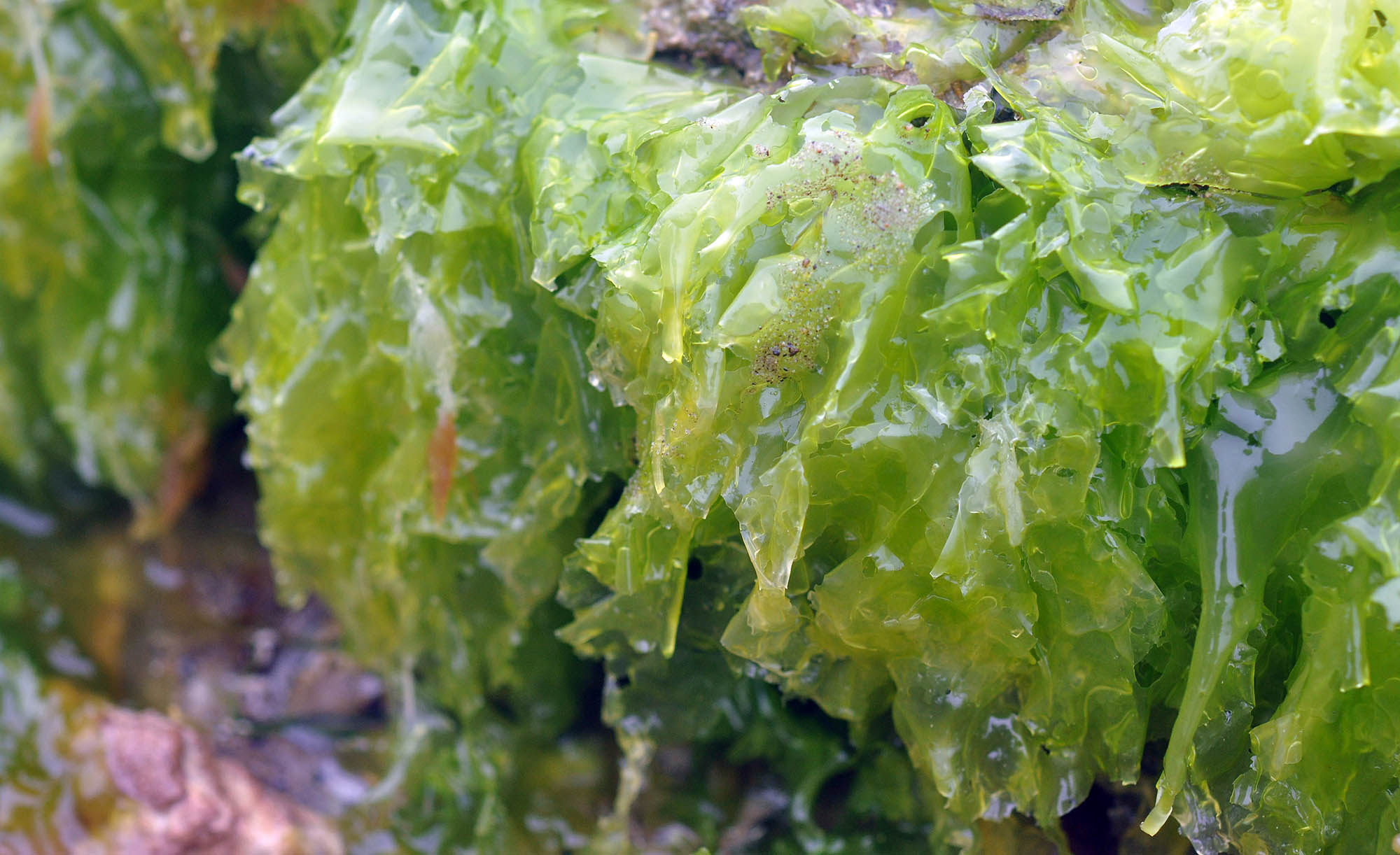 (Maria Island, Tasmania)
(Maria Island, Tasmania)The family Amaranthaceae includes many of the chenopods familiar to Australians from arid inland areas. These plants are adapted to saline conditions and include seashore inhabiting species, such as Chenopodium candolleanum, 'Seaberry Saltbush'.
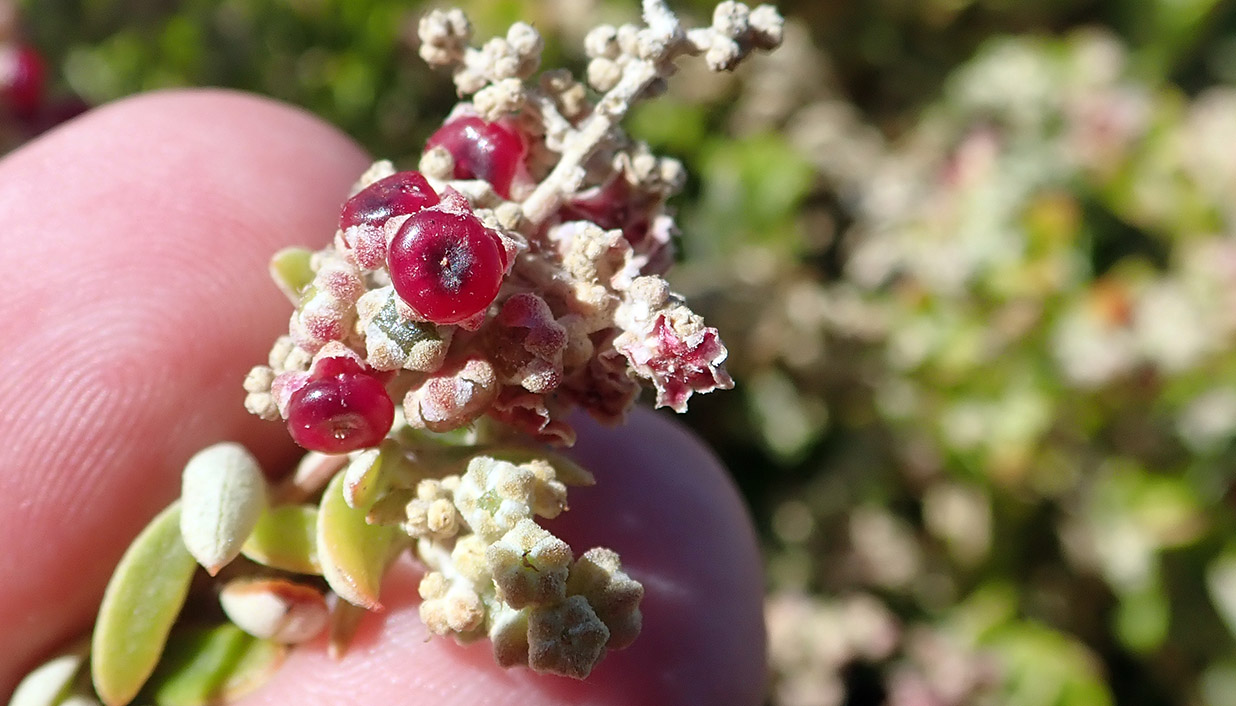 (Rottnest Island, Australia)
(Rottnest Island, Australia)Along these southern shorelines, the Mint family Lamiaceae includes Westringia dampieri, 'Coastal Rosemary'. This is a silvery looking shrub, with thin succulent-like leaves. The flowers peak in summer, and are white (or pink) and hairy with pink and yellow spots. They grow on limestone, and are native to the coastal heaths and woodlands in southern West Australia, and along the Nullabor coast to South Australia.
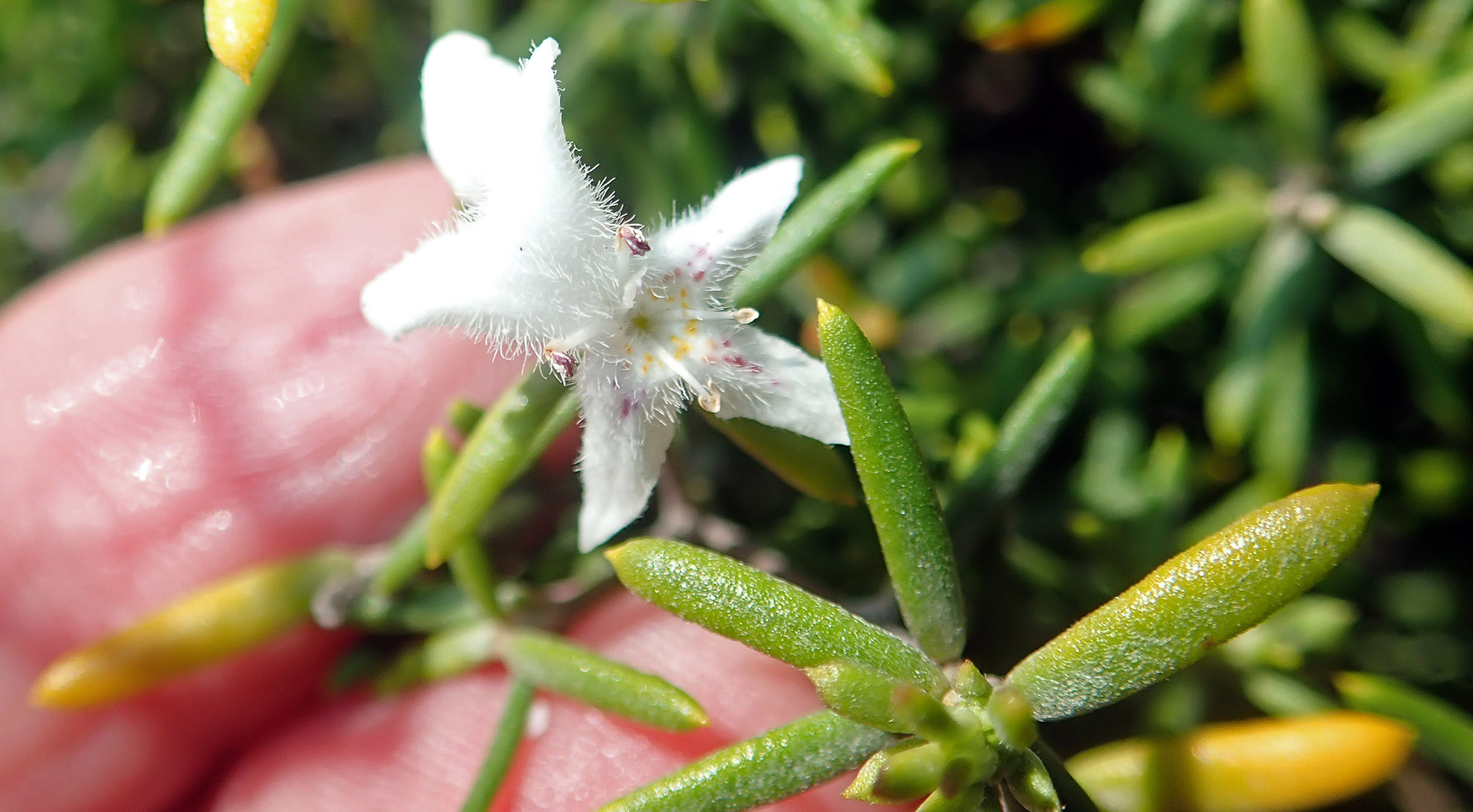 (Rottnest Island, Australia)
(Rottnest Island, Australia)
Physalia physalia, known as 'Blue Bottle' in Australia, New Zealand & South Africa, and 'Portuguese Man'o war' elsewhere. Blue bottles can still sting even when washed up dead on the beach.
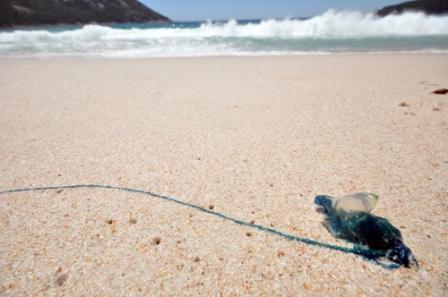 (Wineglass Bay)
(Wineglass Bay)Pinna spp. 'Razor Clams' are found worldwide. The Razor Clams are so named due to the sharpness of the top of their shell, which when alive can be buried into the sand with the jagged top just near the surface of the sand.
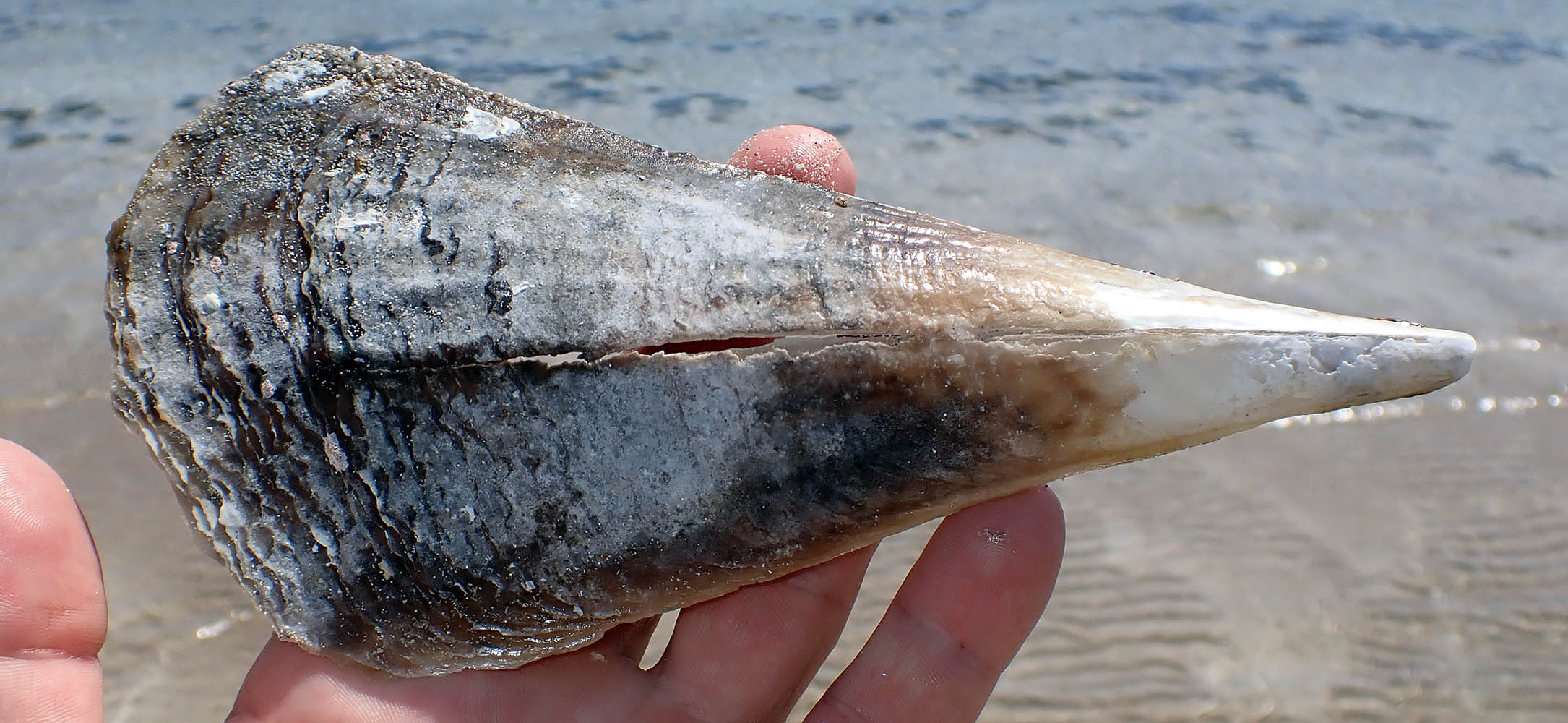 (Donnington, South Australia)
(Donnington, South Australia)The 'Stalk-eyed Crabs' in the family Ocypodidae are small to medium in size with a square-shaped body. Their common name is derived from their close set eyes that are located on protruding stalks. These stalks can be held up for seeing across their habitat, or slotted down in grooves. Ocypode convexa, 'Golden Ghost Crab' is one of the largest and most colourful of the Ghost Crabs. It is endemic to the west coast of Australia, from Perth to Broome, and is only common on undisturbed beaches (for example: where there are not kids not cars driving on the sand).
 (Shark Bay, W.A)
(Shark Bay, W.A)While the temperate northern hemisphere has a number of species of 'sea duck', this is much less common in the equivalent habitats in the southern hemisphere. Some species seen on salt water along the coast include:
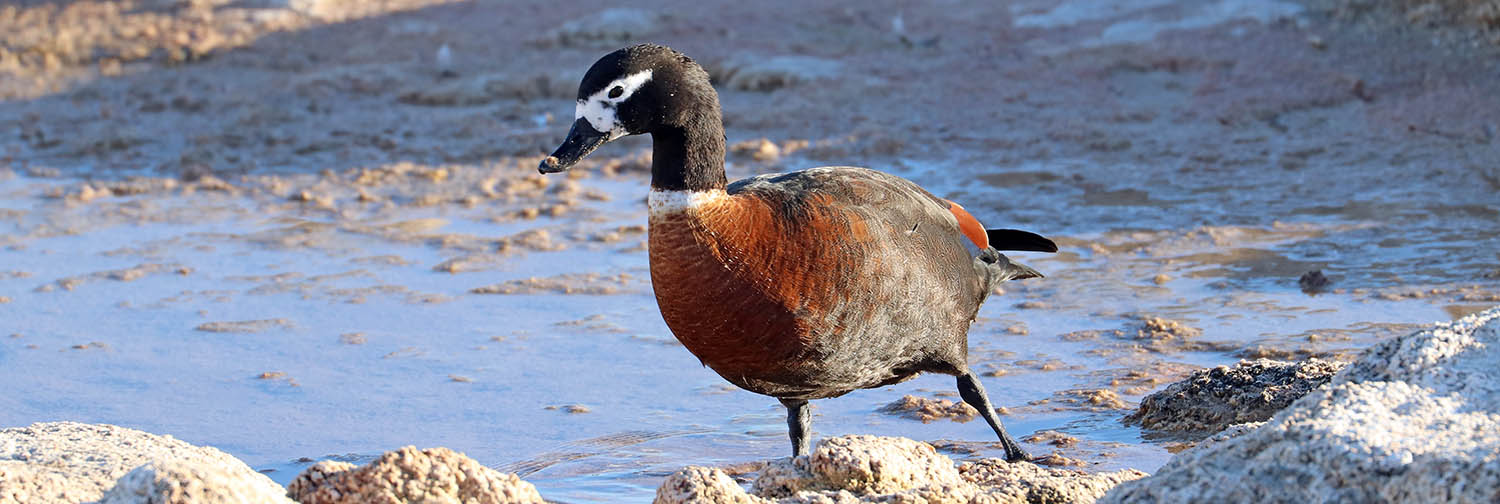 'Australian Shelduck', (Yalgorap National Park, Western Australia)
'Australian Shelduck', (Yalgorap National Park, Western Australia)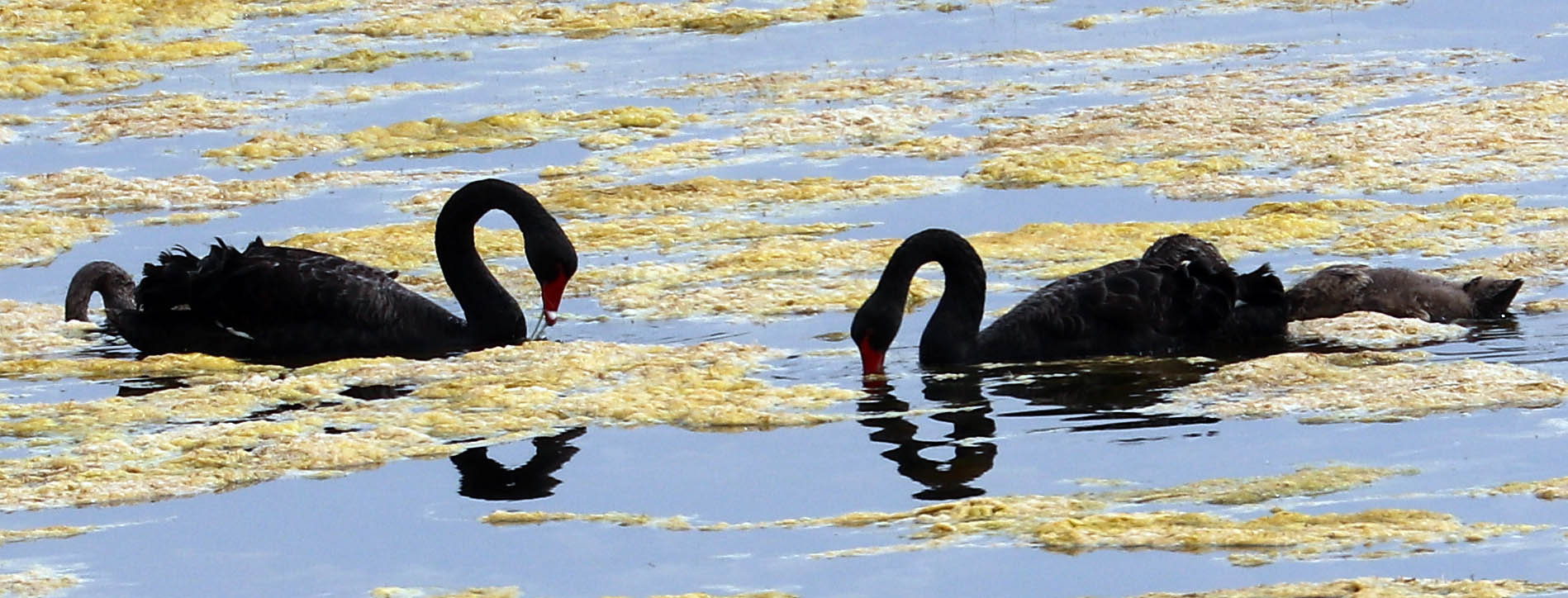 'Black Swan' (Kangaroo Island).
'Black Swan' (Kangaroo Island).Most coasts around the world are home to one or two species of black and/or black & white Oystercatchers, and southern Australia and New Zealand are no differerent. Below is: Haematopus longirostris, 'Pied Oystercatcher'.
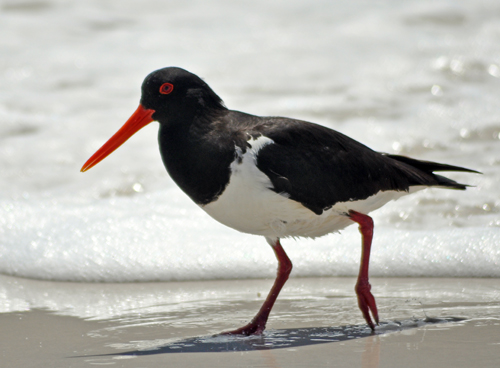 'Pied Oystercatcher' (Wineglass Bay, Australia)
'Pied Oystercatcher' (Wineglass Bay, Australia)Many of the smaller birds running along New Zealand and southern Australian beaches are from the Plover and Dotterel family Charadriidae, including Charadrius ruficapillus, 'Red-capped Plover' (below).
 (South Australia)
(South Australia)The family Laridae contains the terns and gulls. Below is the widespread Thalasseus bergii, '(Greater) Crested Tern'.
 'Greater Crested Tern' (Rottnest Island)
'Greater Crested Tern' (Rottnest Island)There are over 48 species of gull and they can be found all over the world. Most people would recognize gulls as a group and they were once placed in their own family. The bills are straight and strong, and the wings are long. The legs are strong for running, but also webbed for swimming. They are similar in many ways to their close relatives the terns, but differ in the fact that they have heavier bodies and are less aerial. Generally, adult gulls are coloured in whites and greys, with patches of blacks for contrast. As in some other types of seabird, blood brightens the bill and the legs in many species of breeding adults. Many species appear to be fairly long-lived, so there is a slow change of plumage colour and pattern from juvenile to adult over a few years. Gulls are familiar birds that are found all over the world. More species are found in the Northern Hemisphere than the Southern, and they are much more common along the temperate seashores of the world than in the tropics. Gulls are not usually found too far out to sea, and thus are often a good indicator of nearby land.
The most familiar gull is Chroicocephalus novaehollandiae, 'Silver Gull'. This is a slim gull with light grey upperparts, snow white head underparts: breeding adults have bright red bill and legs. This is the common gull in Australasia, and often just referred to as a ‘seagull’. It is taken for granted as has increased in urban areas, and even considered a nuisance, and it is now common all around Australia's coast.
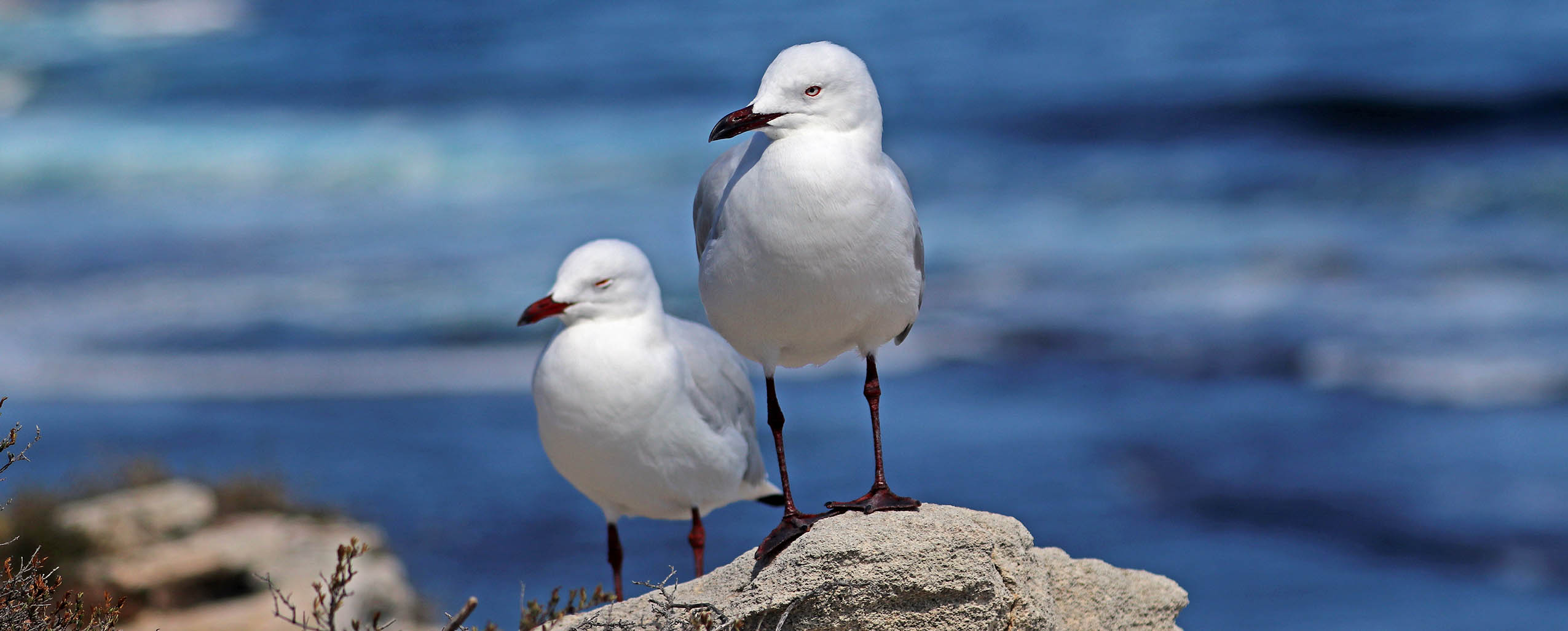 (Rottnest Island, Australia)
(Rottnest Island, Australia)A similar species, and a split from the previous, is Chroicocephalus novaehollandiae scopulinus, 'Red-biiled Gull' (below), the New Zealand form of the Silver Gull.
 (Kaikoura, New Zealand)
(Kaikoura, New Zealand)While the Kelp Gull is common and widespread, Larus pacificus, 'Pacific Gull' (below) is endemic to these coasts. It is a large gull with massive bill and 'red lipstick'.
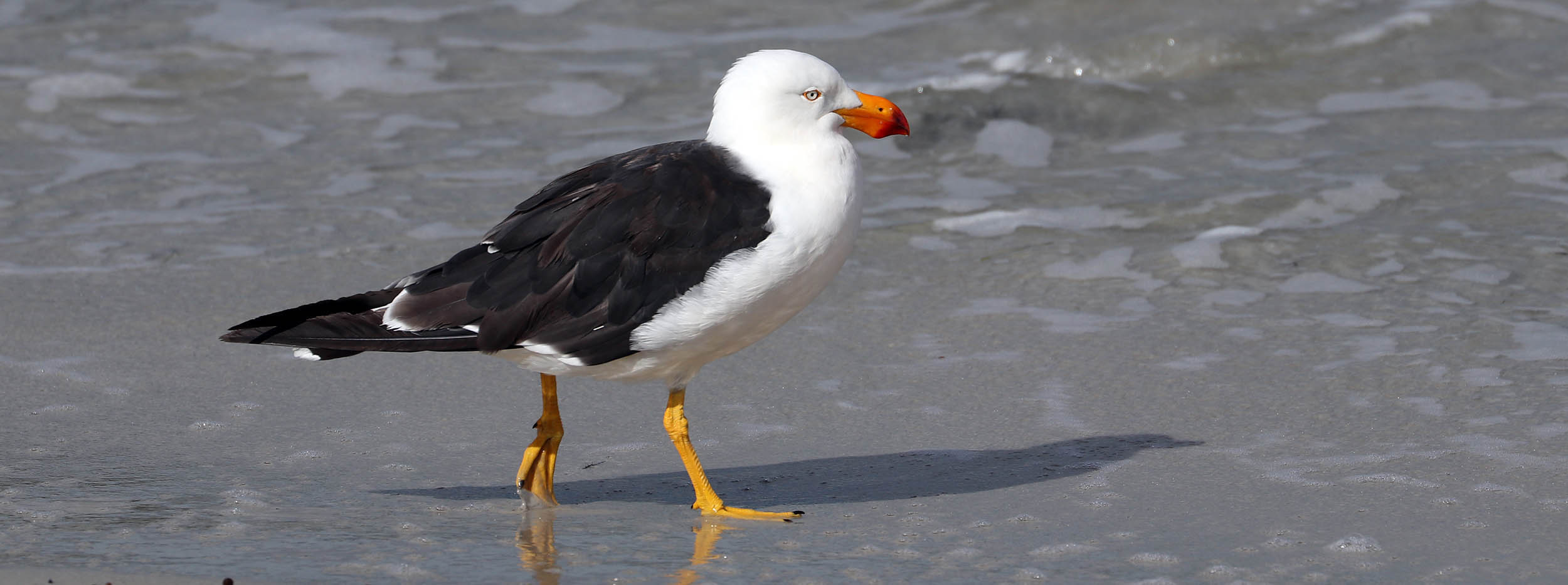 (Maria Island, Tasmania)
(Maria Island, Tasmania)Contrary to many people's expectations, there are just as many penguin species along the cool temperate seashores of Australia and New Zealand as there are along the Antarctic continent shores.
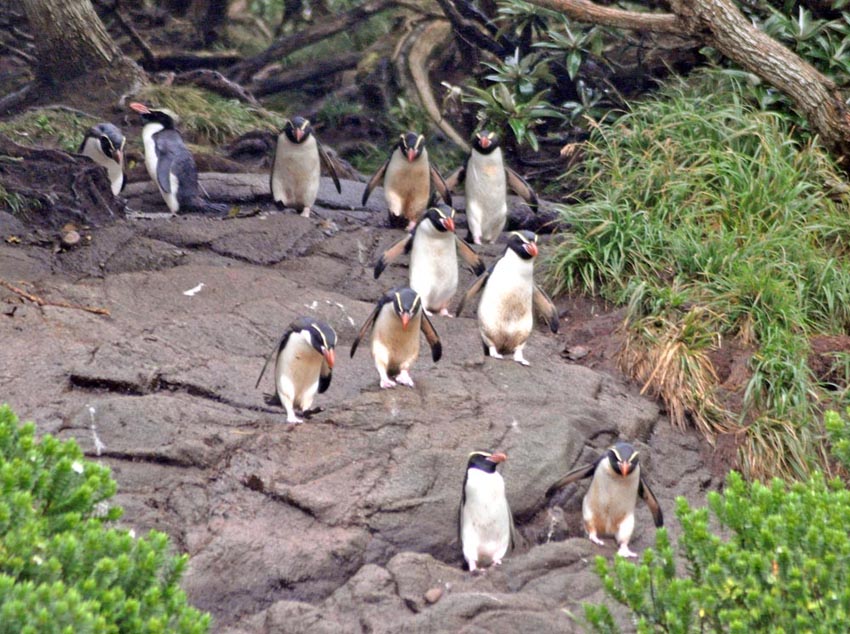 'Snares (Crested) Penguin', (Snares, New Zealand)
'Snares (Crested) Penguin', (Snares, New Zealand)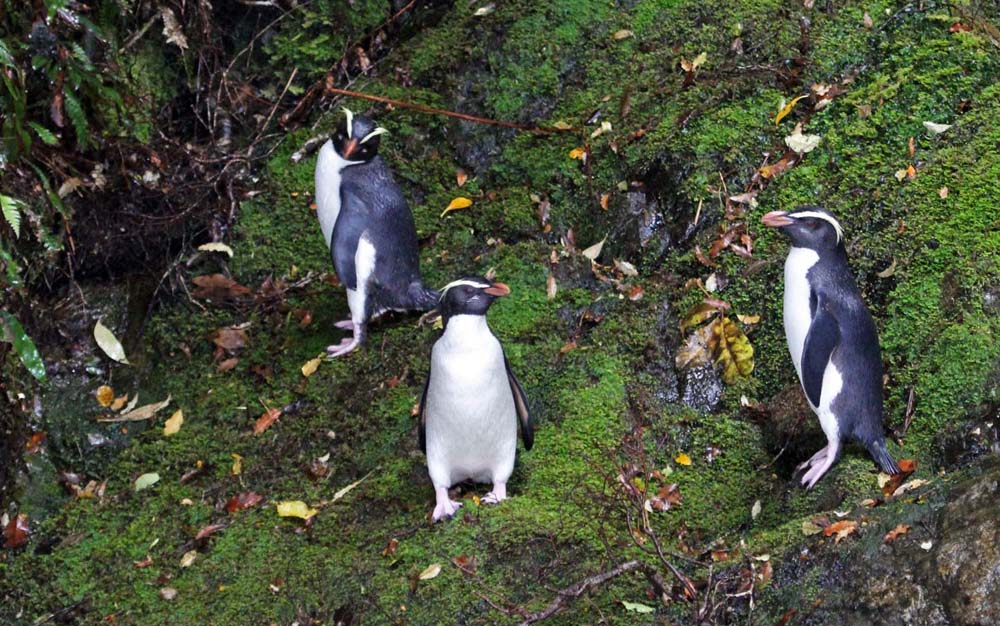 'Fiordland (Crested) Penguin', (Fiordland, New Zealand)
'Fiordland (Crested) Penguin', (Fiordland, New Zealand)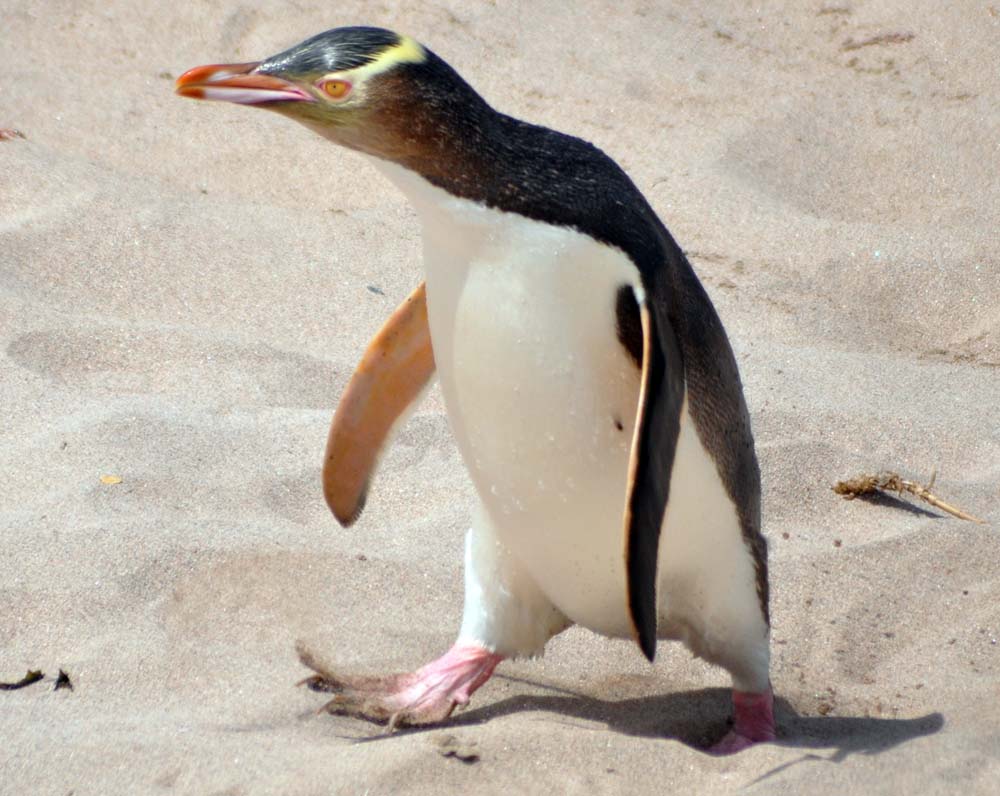 'Yellow-eyed Penguin', 'Hoiho', 'Tarakaka', (Otago Peninsula, New Zealand)
'Yellow-eyed Penguin', 'Hoiho', 'Tarakaka', (Otago Peninsula, New Zealand)The most widespread, and thus most commonly seen and best known species is the 'Little/Blue/Fairy Penguin' (below). This is the smallest of all penguins.
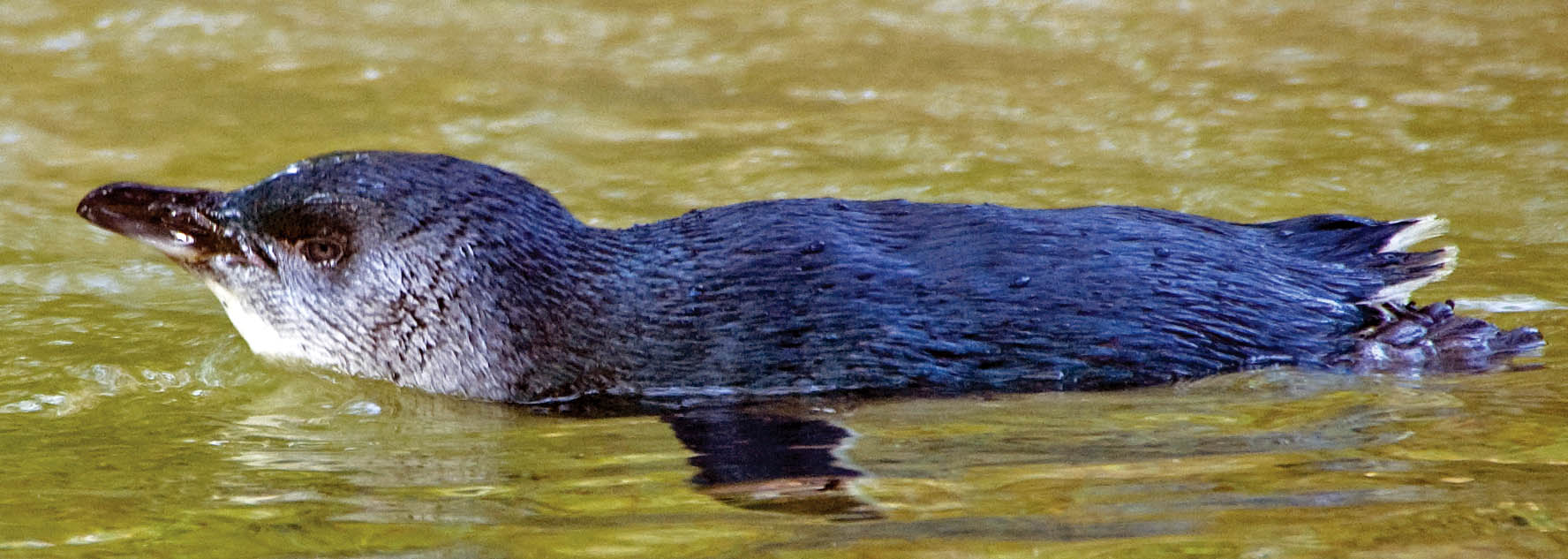
Depending on your taxonomy, there are at somewhere between 29 and 37 species of cormorants and shags found around the world. The names ‘cormorant’ and ‘shag’ have little biological significance or taxonomic correlation outside of Europe, for the names change depending where you are; in southern Australia most species are referred to as ‘cormorants’, whereas in New Zealand the very same species may be called 'shags'.
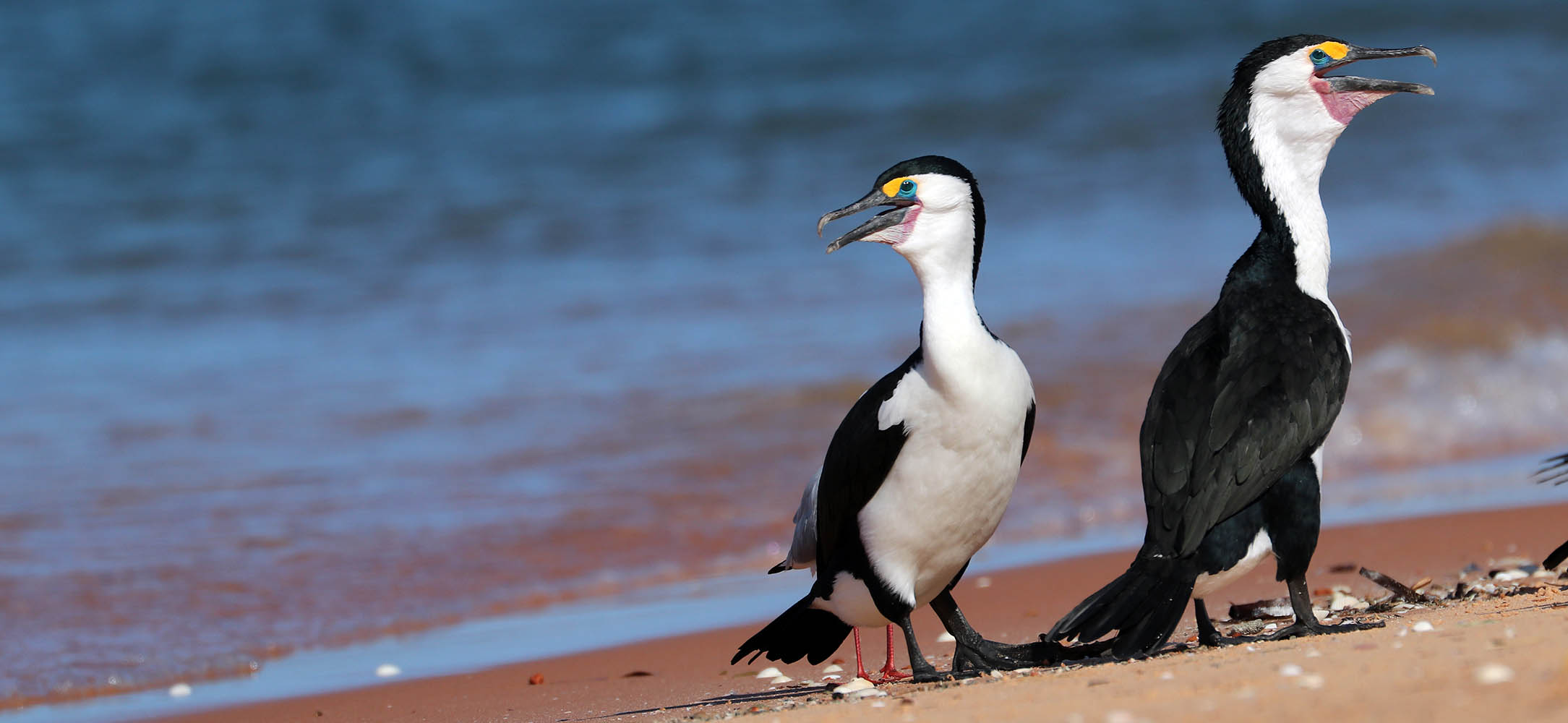 (Australian Pied Cormorants, Shark Bay, W.A)
(Australian Pied Cormorants, Shark Bay, W.A)They are almost always found near water; some species near freshwater, others near marine, but many species are found in both habitats. Cormorants are large birds, usually black, and often with some white or grey. They have a long body shape with short legs and big, webbed feet set back on the body, so as they stand upright when on land. They have long, straight bills with a hooked tip at the end. They paddle along in the water surface somewhat like a duck, but they usually sit much lower in the water. This reason they do not float in the water is that, unlike most waterbirds, the feathers of cormorants are not waterproof. This reduces buoyancy, which allows them to submerge without effort and with an absence of bubbles, and allows them to ‘sneak up’ on their prey. However, this also means they have to ‘hang their wings out to dry’ and are often seen standing with their wings outstretched. Cormorants on the coast feed mainly on marine animals such as fish, crustaceans and squid.
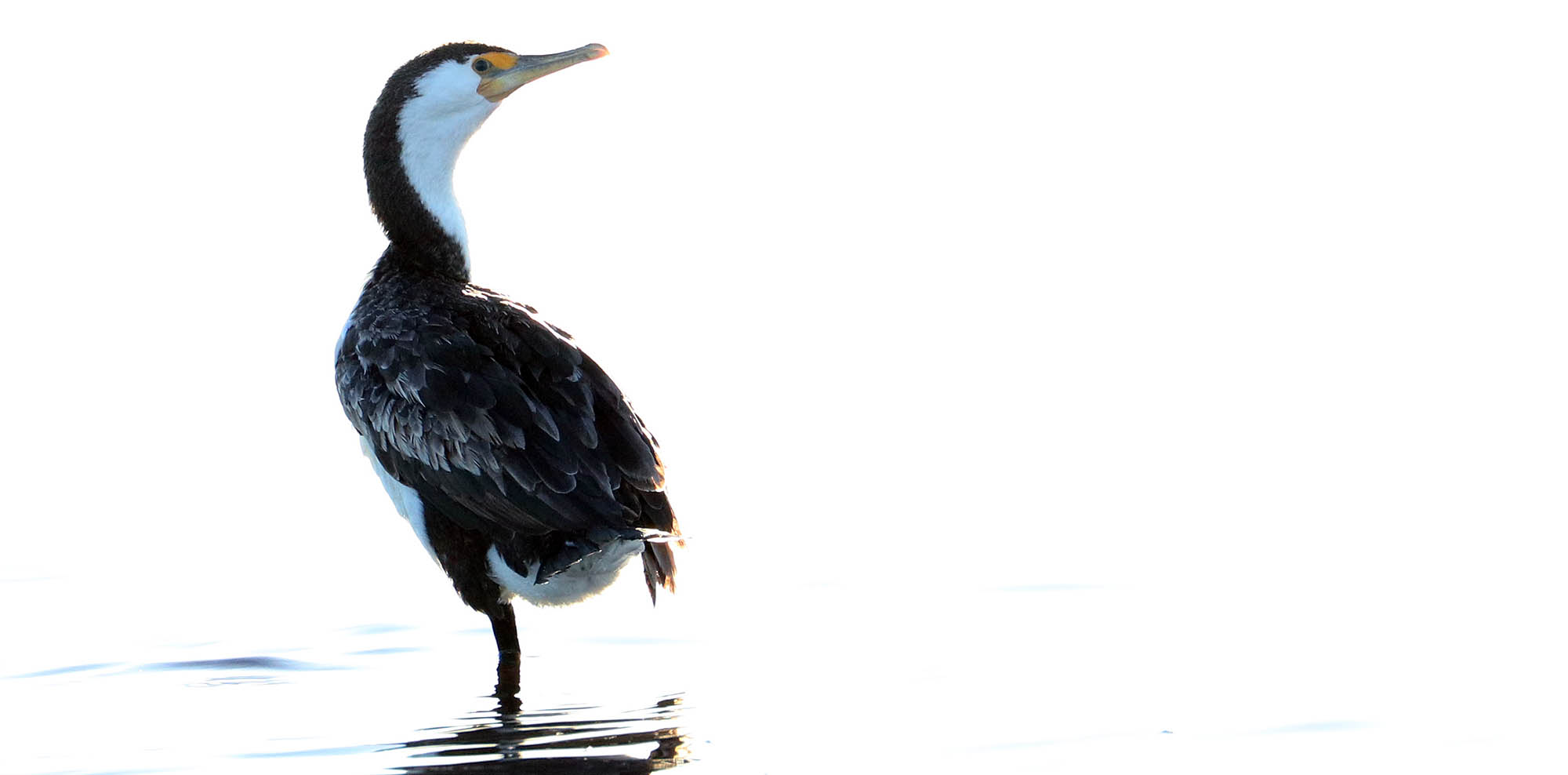 'Great Pied (Australian) Cormorant', 'Pied Shag', (Shark Bay, W.A.)
'Great Pied (Australian) Cormorant', 'Pied Shag', (Shark Bay, W.A.)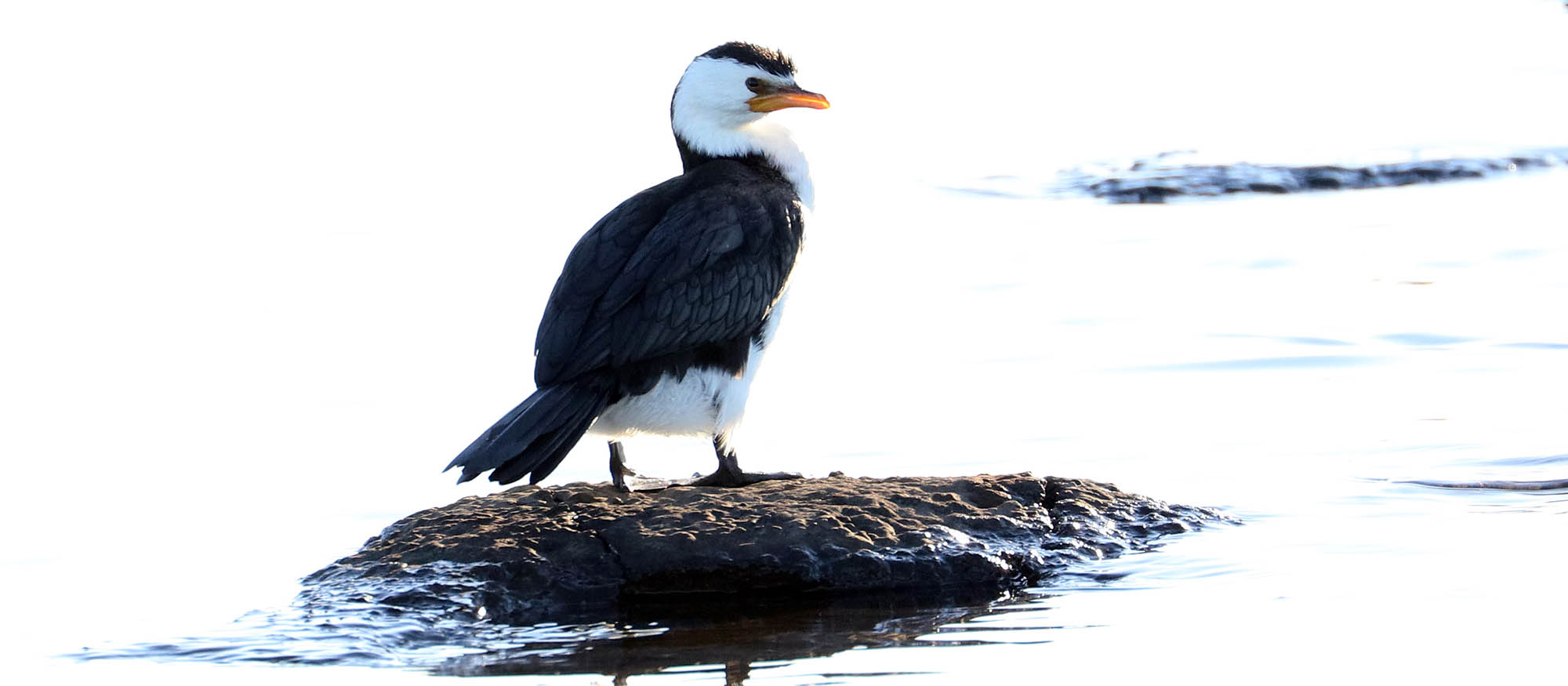 'Little Pied Cormorant/Shag', (Shark Bay, W.A.)
'Little Pied Cormorant/Shag', (Shark Bay, W.A.) 'Little Black Cormorant', (Shark Bay, W.A.)
'Little Black Cormorant', (Shark Bay, W.A.)The family Sulidae contains all the Boobies and Gannets. The species seen along the coast of New Zealand and southern Australia is Morus serrator, 'Australasian Gannet'.
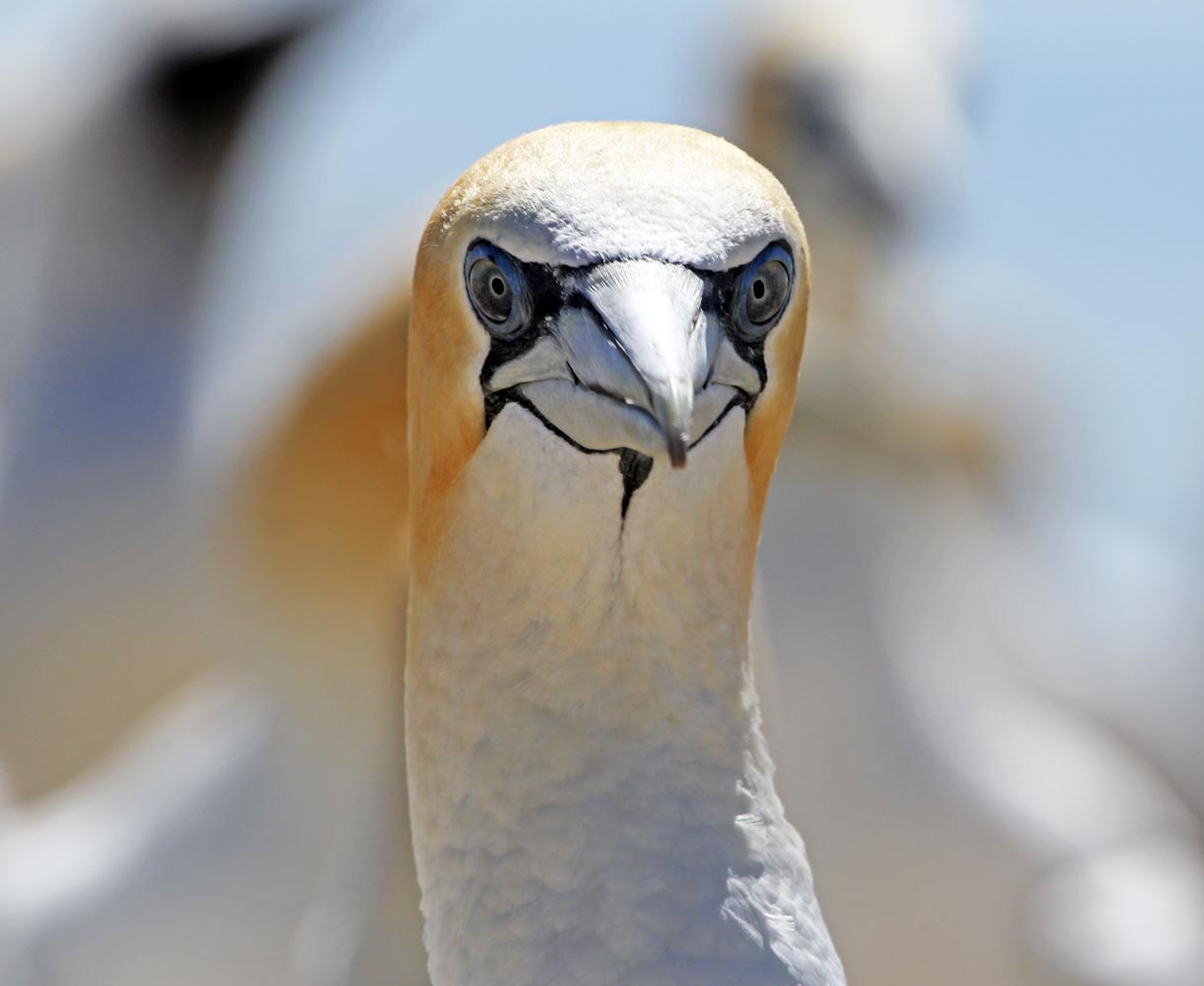
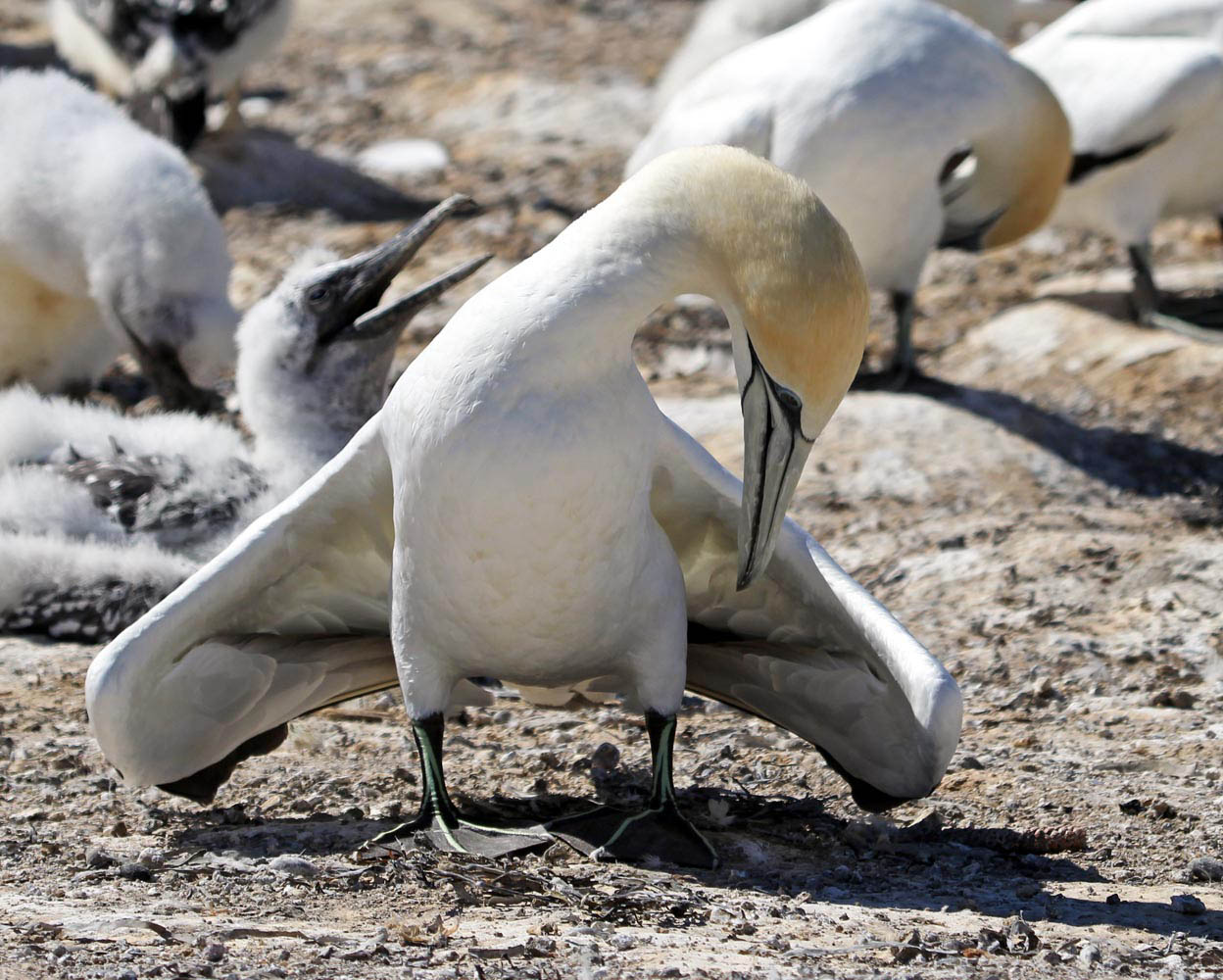
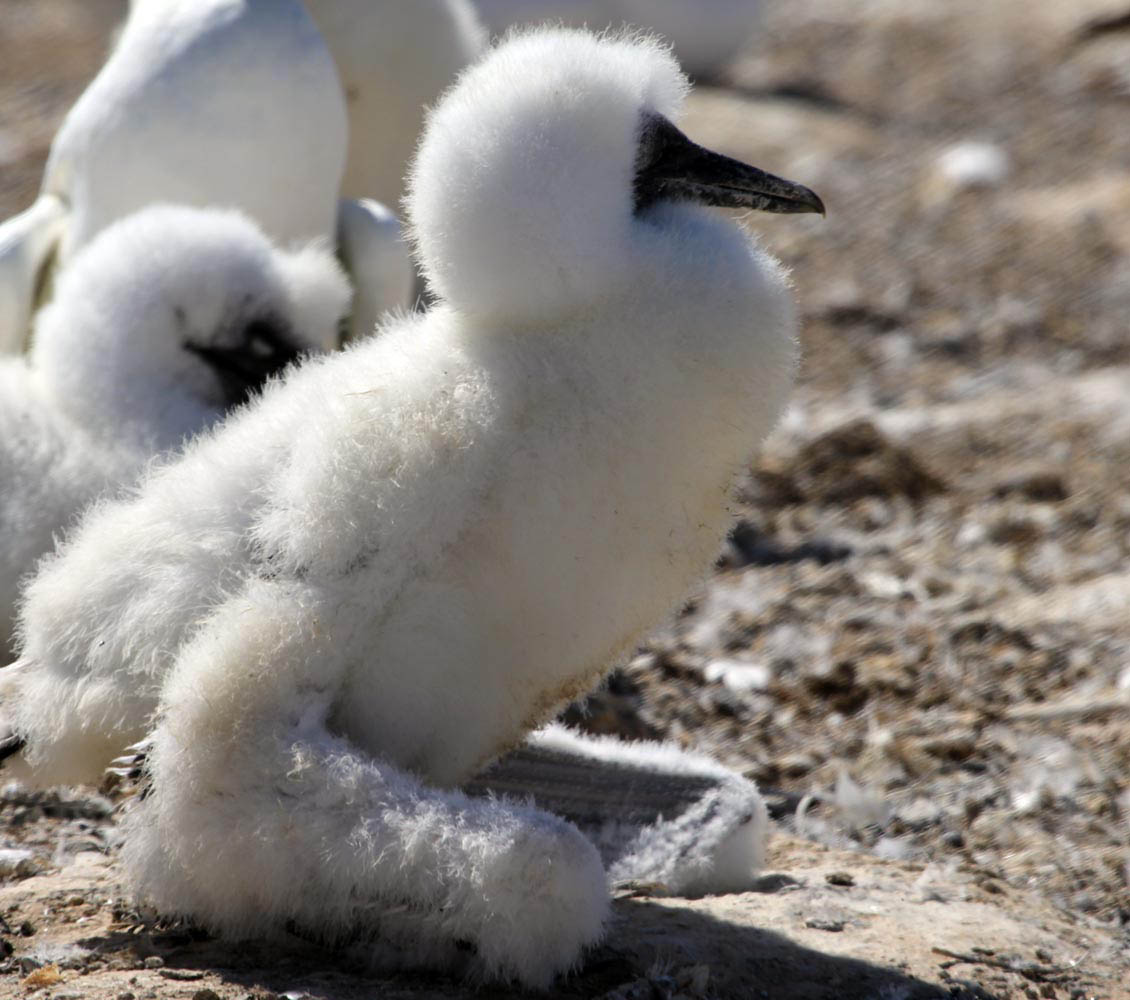
The family Otariidae include all the 'Eared Seals', including sea lions and fur seals.
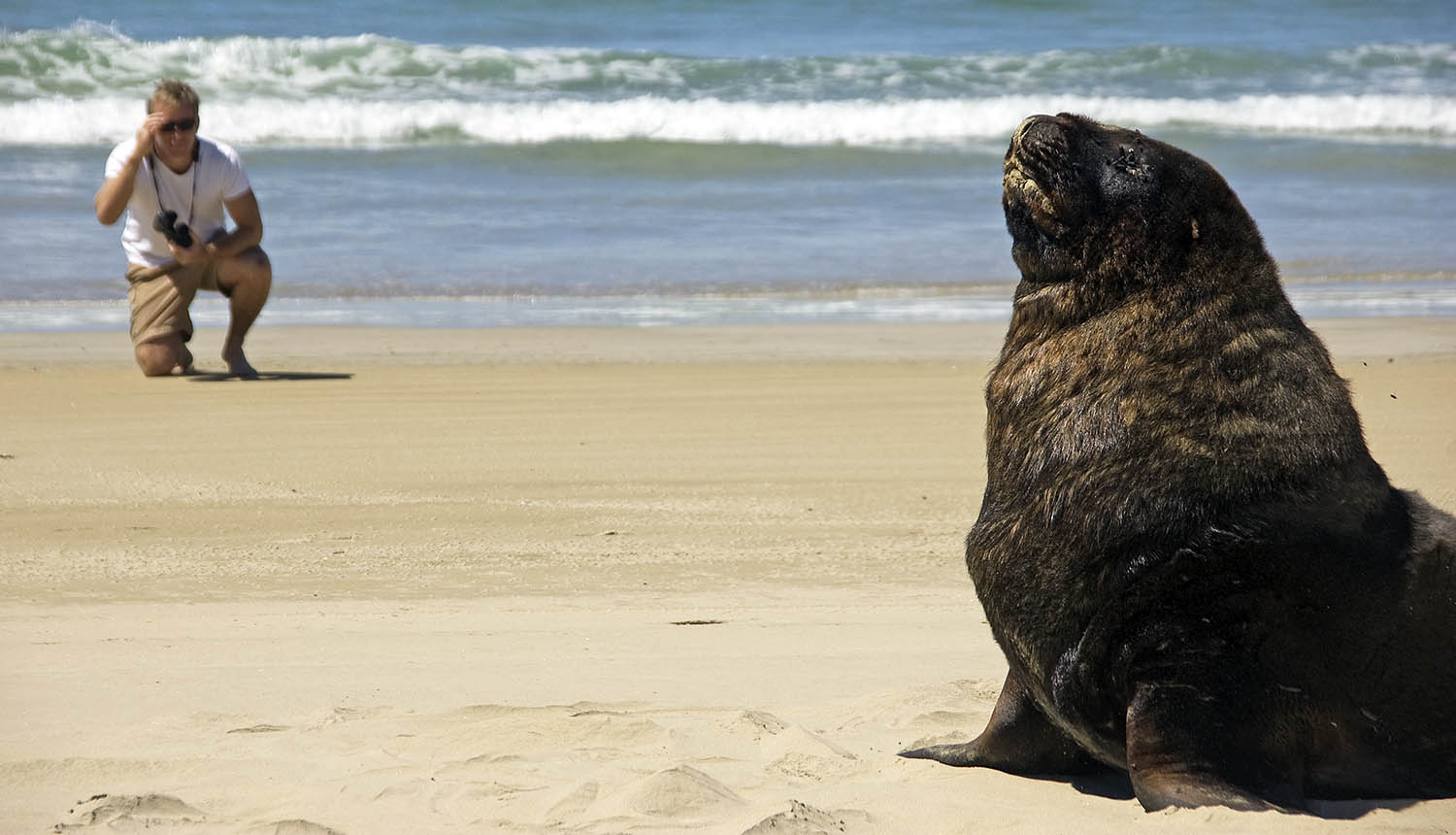 The Hookers Sea-Lion is the one on the right!
The Hookers Sea-Lion is the one on the right!Places to experience the Australasian temperate seashore
There are many national parks and other areas to explore the temperate seashores around New Zealand and southern Australia, including Cape Kidnappers, Fiordland, and Snares Islands, all in New Zealand. In Tasmania there is the stunning Wineglass Bay.
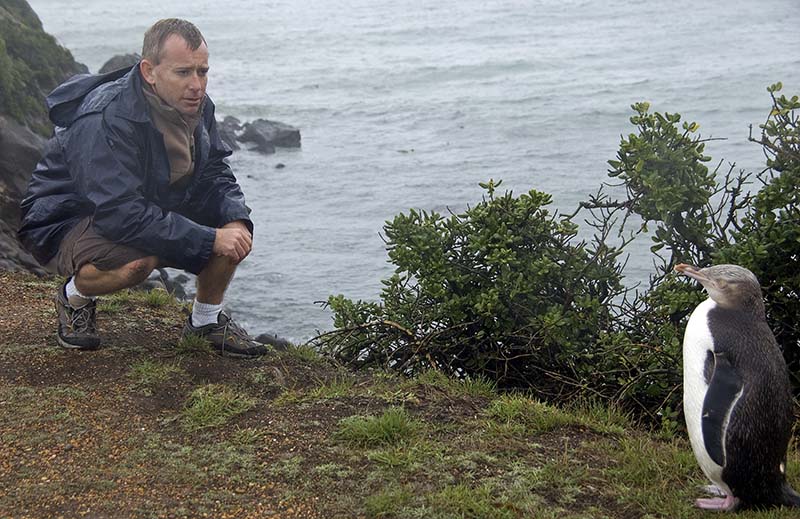 The author with a Yellow-eyed Penguin in New Zealand; the author is the short creature on the left (photo by Mark Steadman)
The author with a Yellow-eyed Penguin in New Zealand; the author is the short creature on the left (photo by Mark Steadman)